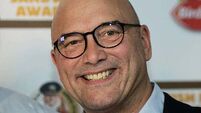Singing with the pain

SHE was slapped by a director on set, Gene Kelly forced her to rehearse until her feet bled and she saw fellow stars put under house arrest if studio heads thought they were stepping out of line. But, in recalling Hollywood’s golden age, the actress Debbie Reynolds believes the industry has lost more than it has gained since the demise of the big studios. It was that tyrannical control over every conceivable aspect of film-making, from stars to scripts, that produced some of cinema’s greatest movies, she says.
It is more than 60 years since she made her name with Singin’ in the Rain and half a century since she received an Oscar nomination for The Unsinkable Molly Brown. Now, at the age of 81, she is about to publish her memoir, Unsinkable, in which she tells many of the stories that the studios kept out of the press at the time.











